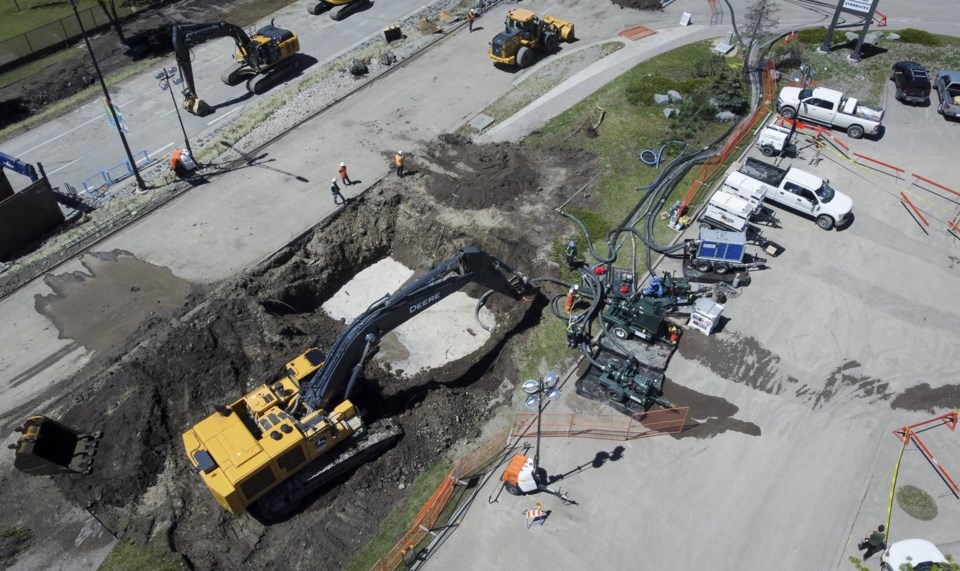CALGARY — Calgary's water use is creeping back up, despite conservation pleas from city officials as crews scramble to fix a massive water main break.
"We — you and I — need to keep reducing our water usage," Mayor Jyoti Gondek said Wednesday.
Gondek said that on Saturday Calgarians used about 440 million litres of water. By Wednesday, that figure had crept up to 480 million.
That's still below the threshold of where the city of 1.6 million people can get water to all its neighbourhoods and keep a reserve for essential services, including firefighting.
But the trend is "not great," Gondek said.
"We can see water usage is creeping up. This gradual increase is certainly becoming a concern.
"I know it's tough to watch your clothes pile up, and I know it's tough to look in the mirror sometimes and see some sad, droopy hair, but it's critical," she said.
All residents have been asked to cut their water usage at home with measures like shorter showers and fewer toilet flushes. A mandatory ban was ordered on outdoor watering, including for lawns and washing windows.
Calgarians were in their seventh day of the restrictions, made necessary after one of the city's two main feeder pipes carrying about 60 per cent of its water fractured.
A seven-metre section of replacement pipe, big enough in diameter for a car to drive through, arrived on the site Tuesday. But that's just the start of the repair process, Gondek said.
Installing and welding the new pipe into place will take about two days, she said. Flushing and filling the pipe will take another three. Finally, readying the new section of pipe for water flow into the city's underground reservoirs will take two days.
Infrastructure manager Francois Bouchard said there was no indication from any of the city's monitoring that the pipe was about to fail.
"The pipe is approximately 49 years into its 100-year lifespan," he said.
Bouchard said the pipe was running within its pressure limits. Acoustic monitors, designed to detect early signs of failure, revealed none.
Physically inspecting the pipe would have required shutting it down and digging it up, putting stress on both it and other pipes in the system, said Bouchard.
"Our regular modelling of the pipe, incorporating factors like age, pipe materials (and) operating pressures, did not give any indication a physical inspection was required," he said.
Emergency Management Chief Sue Henry said bylaw officers were taking an "education approach" to calls about improper water use.
She said the city has received 1,170 such calls and responded to 1,077 of them. Officers have issued 306 written warnings, 368 verbal warnings and one summons.
This report by The Canadian Press was first published June 12, 2024.
The Canadian Press



